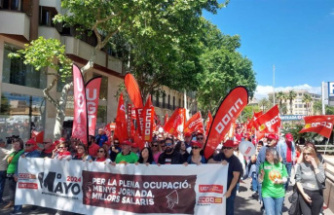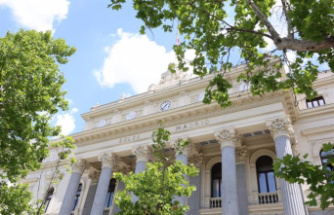Before a “surge” this week during which immigration officials targeted about 160 undocumented immigrants with felony records and fugitives, the rumors began to fly.
It was referred to as the big scare. An online notice alerting people of an immigration checkpoint in the southern end of Ontario went viral Thursday, sending people into a frenzy.
One Facebook user advised parents not to leave their kids alone in the area.
“Everyone be careful,” another person wrote on Facebook.
The only problem was, it wasn’t real. By that Thursday afternoon, though, the damage was done, and the rumor did what rumors do: grow. Soon Fontana police began receiving numerous inquiries about deportations and checkpoints.
Then came reports of roving Border Patrol agents picking up people in San Bernardino. All supposedly occurred last week. All turned out to be unfounded.
This social media panic, immigrant rights organizers say, speaks to the fear that immigrant communities are experiencing as President Donald Trump threatens to cut federal grants for so-called “sanctuary cities” protecting immigrants. He also has moved to deport immigrants convicted or charged with committing a crime, the target of this past week’s surge.
“We definitely are understanding of the fear, but what we definitely didn’t want was for false information to be out there and for people to be scared,” said Javier Hernandez, director for the Inland Coalition for Immigrant Justice.
According to a Pew Research study released last week, about 1.4 million undocumented immigrants live in Southern California, the largest grouping in the country.
“There is a heightened tension and climate of fear created by policies by the federal government,” said Jose Calderon, professor emeritus of Sociology and Chicano/a-Latino/a Studies at Pitzer College.
In response to the bogus incident in Ontario, U.S. Immigration and Customs Enforcement spokeswoman Virginia Kice clarified that ICE doesn’t conduct checkpoints.
Rumors of ICE checkpoints and random sweeps are false, dangerous and irresponsible, she said. They create panic and put communities and law enforcement personnel in unnecessary danger, according to ICE.
Kice said rumors also began circulating last week that ICE was conducting a raid in Sacramento. It turned out to be an operation by local law enforcement.
The U.S. Border Patrol’s San Diego Sector was not involved in any operations or arrests Thursday or Friday in Muscoy or San Bernardino, supervisory agent Mark Endicott said.
Thursday was the first time U.S. Customs and Border Protection spokesman Ralph DeSio said he became aware of social media discussions about raids.
“We tend to work along the border,” he said.
Officials with the Border Patrol, he added, “are not aware any of special operations of patrol agents picking people up and hauling them away.”
But, without receiving locations or the raids or any photos from the incidents, he said there is no way of authenticating whether the claims were true.
Emilio Garcia contends the rumors about the Border Patrol might be true. As executive director of the San Bernardino Community Service Center Inc., Garcia said he recalls incidents involving Border Patrol officers in 2009 and 2010.
“We had pictures and video and they denied it,” he said.
In the more recent incidents, Garcia said he heard that the Border Patrol detained three people in San Bernardino on Feb. 2, but those individuals have yet to come forward to him.
In Ontario, what appeared to start with a notice of one immigration checkpoint on Euclid near the 60 Freeway transpired into a number of other unverified immigration checkpoints shared across various social media platforms.
Hernandez said it’s likely someone saw a vehicle that looked similar to the vehicles federal immigration agents drive and automatically assumed a checkpoint was underway.
In the wake of Trump’s election, immigrant rights advocates have become part of networks — teams that include residents, attorneys and church leaders — to respond quickly if they see immigration agents in a community. One person, for example, can offer legal services. Or a church can offer sanctuary to house undocumented immigrants. Another person can broadcast the information of a potential raid.
If the earlier social media frenzy showed anything, it is that people are looking out for one another, Hernandez said.
They just have to make sure they’re sharing factual information, Hernandez said.
The Inland Coalition for Immigrant Justice now is sharing a hotline number, 951-665-8782, that people can call to report a raid or checkpoint. Hernandez said his team will work to confirm the validity of reports.
Last week, immigrant rights organizers took the role of journalists. They dispersed and drove to the alleged checkpoint locations throughout the day to physically verify whether immigration agents were on scene. They also called ICE to fact check.
Once they determined the information was false, they posted their findings on Facebook and other social media avenues.
Hernandez also said they are messaging people directly on social media, asking them to delete posts about checkpoints or raids they know are not factual.
The false reports in Fontana prompted the police to issue a release denouncing the claims: “It appears that unknown subjects are trying to create a public panic, and we want our community to be assured that this is a complete hoax,” a police news release states.
Fontana police suggests the public fact check any reports before spreading information on social media.
Garcia agrees.
The San Bernardino Service Center, a nonprofit that provides immigration services in Riverside and San Bernardino counties, holds biweekly “Know Your Rights” sessions to help deter rumors and hoaxes from spreading.
“Be aware the information is coming from a source that can be trusted — be educated,” Garcia said.
Staff writer Beatriz Valenzuela contributed to this report.
Our editors found this article on this site using Google and regenerated it for our readers.













